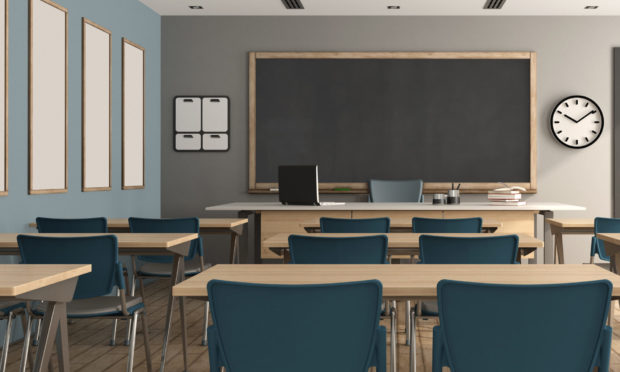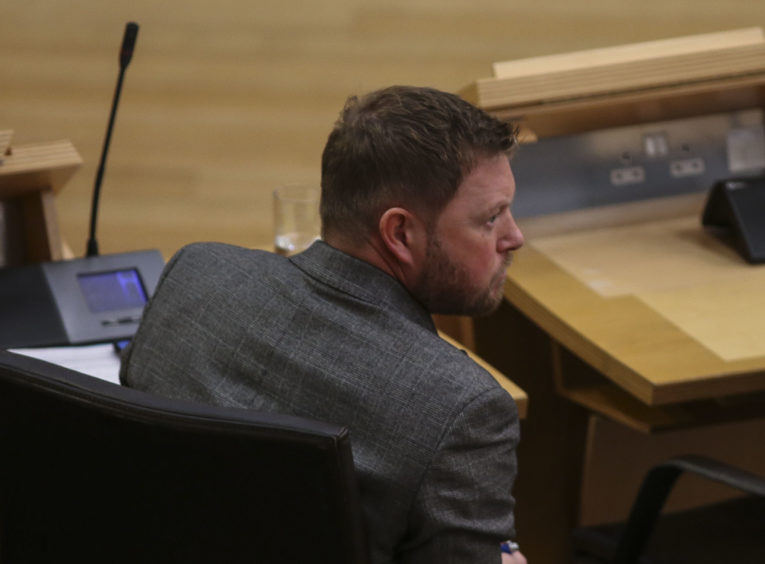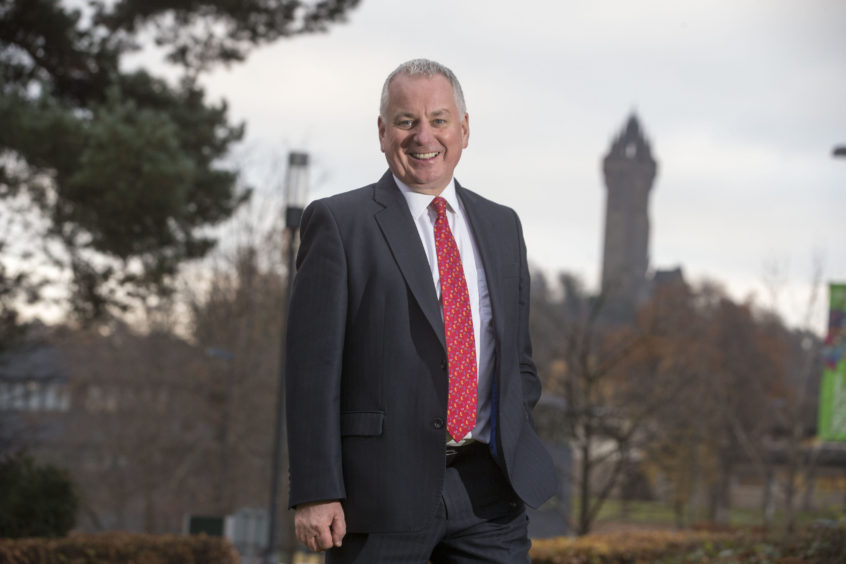The Scottish Conservatives have called on the Scottish Government to make an “emergency” Holyrood statement on plans to re-open schools on a part-time basis during the Covid-19 crisis.
Tory education spokesman Jamie Greene made the demand claiming the education system was facing an “unprecedented crisis” as the controversial proposals were subjected to yet more criticism.
Mr Green’s call came after education expert Professor Lindsay Paterson claimed the attainment gap between Scotland’s richest and poorest pupils will be made five times worse by December under the arrangement.
Former first minister Lord McConnell joined the weekend criticism of the so-called “blended learning” model proposed by Education Secretary John Swinney for the start of term on August 11.
Lord McConnell, who used to be a maths teacher, warned the proposals could prove more damaging than the exams crisis of 20-years ago when 2,000 children were given the wrong results.
An outcry has greeted the blended learning model, which involves a mixture of home learning and more conventional classroom teaching.
Parents have raised concerns that their children’s education will suffer as it has emerged that some councils have made plans for children attending classrooms just one day a week.
Confusion has surrounded the policy with First Minister Nicola Sturgeon and Mr Swinney sending mixed messages about how schools will operate from August 11.
Last week Mr Swinney told parents that two-metre social distancing would have to be observed when children go back to school, implying that there could not be a fully operational return to school. But shortly afterwards Ms Sturgeon described blended learning as only “a contingency”, suggesting her ambition was schools to reopen in a way that was as normal as possible.
But Cosla children’s spokesman Councillor Stephen McCabe told MSPs that government advice suggested blended learning was not just a contingency but the “only plan” for the return of schools.
Mr Greene said the confusion had to be addressed before the Scottish Parliament winds down its business over the summer.
The lack of ambition and clarity over school plans is not just infuriating it’s downright irresponsible. Teachers are demanding answers, and parents are frantic with worry. They’re fearful for their child’s future, and won’t be able to return to work themselves unless this is resolved.”
Tory MSP Jamie Greene
“Last week epitomised the confusion and mixed messaging over plans for schools, with local councils saying one thing and the First Minister and John Swinney saying another,” Mr Greene said.
“It shouldn’t take opposition parties demanding debates to resolve this, it should be the SNP government proactively listening to parents and coming to parliament with a plan.
“The lack of ambition and clarity over school plans is not just infuriating it’s downright irresponsible.
“Teachers are demanding answers, and parents are frantic with worry. They’re fearful for their child’s future, and won’t be able to return to work themselves unless this is resolved.”
Mr Greene added: “By agreeing to an emergency statement in Holyrood, at least some of the many outstanding questions could be answered.”
A Scottish Government spokesman said: “The Scottish Government, councils and teachers are working together to deliver the best educational opportunities for our children.
“We are prioritising the education and health of our school pupils.
“We know there are no more important issues for parents than the education and the health and safety of their children, and these are really anxious matters for parents to be dealing with.
“Subject to the agreement of the Parliamentary Bureau, the Scottish Government intends to make a statement to Parliament on education this week.”
Blended learning will widen the attainment gap, claim
Earlier Professor Paterson, a education policy expert at Edinburgh University, said blended learning would make inequality worse.
He told The Sunday Times: “We know from research that most of the inequality in children’s progression at school happens during the summer holiday when they are not attending classes.
“Scotland’s complete school lockdown from March to August will therefore have imposed three-and-a-half years of inequality in the space of less than half a year.
“The total effect of the lockdown, plus part-time schooling to December, would be equivalent to imposing five years of inequality in less than a year.”
Keir Bloomer, one of the architects of Scotland’s curriculum for excellence, told the newspaper: “For disadvantaged learners this is an educational catastrophe.”
He added: “Participation in worthwhile learning at home has been shown by research to be very disappointing, with the disadvantaged faring worst. This has happened during a period when teachers have been largely free of class contact and able to devote time to support both children and parents.
“From August, they will be teaching again. The time for supporting home learning will largely disappear.
“What has happened over the past 12 weeks has been ineffective. In August it will be much worse. ‘Blended learning’ will be no more than a cynical euphemism for part-time schooling.”
Worse damage than the exam crisis of two-decades ago, says former FM
Writing in the Herald on Sunday, Lord McConnell said: “Twenty years on and we face an educational crisis that could damage another generation even more deeply. And the class of 2000 are among the parents of 2020, but they are now fighting for their kids.
“This is a crisis every bit as serious as the threat to health in March and the threat to jobs from lockdown. The UK and Scottish governments mobilised on a scale never seen before to save lives and protect jobs. They must do the same now for full-time education.
“In the past week I have spoken to single mums home-schooling kids on their mobile phones, parents out of work worrying they will never get a job if every employer has to give them days off to home-school, teenagers miserable and worried sick about their future. All feel nobody in authority is listening.”
He said the first option for pupils returning in August should be full-time learning at school, with the “basic minimum” being the home-schooling part of the current plans being organised by schools and not at home.
A Scottish Government spokeswoman said: “We recognise that the disruption and challenges caused by the pandemic are hitting children from disadvantaged backgrounds particularly hard and we have been encouraging schools to target support where it is most needed.
“We are providing local authorities and schools with flexibility to redirect resources aimed at closing the attainment gap. This includes the announcement of £250 million for pupil equity funding over the next two years.”
She said 25,000 laptops and internet access worth a total of £9 million are going to disadvantaged children, learning hubs for vulnerable children and key workers will remain open in summer, and added that “meeting the learning needs of pupils from disadvantaged backgrounds continue to be a priority as we plan for the safe reopening of schools”.
On Lord McConnell’s comments, she said: “When schools reopen on August 11, we expect councils to have made arrangements that maximise the time that pupils spend having face-to-face learning safely.”












